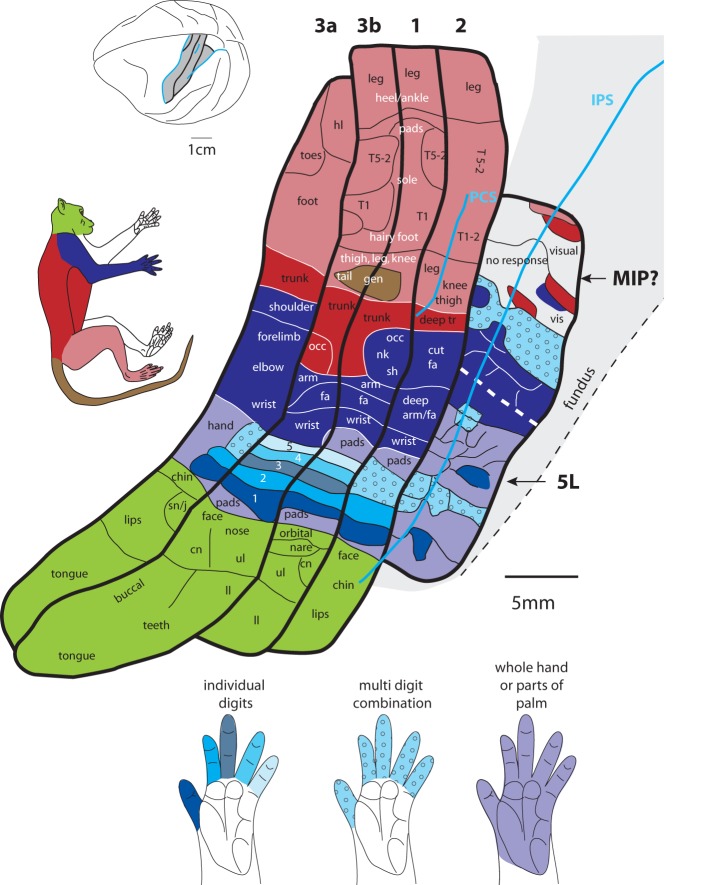Figure 9.
A summary of the functional subdivisions of anterior parietal areas 3a, 3b, 1, and 2 and posterior parietal areas 5L and the presumptive MIP. While anterior parietal areas have a clear parallel mediolateral organization, this type of organization is not observed in posterior parietal areas. Both MIP? and area 5L have fractured maps that are dominated by representations of the digits, hand, and forelimb. The solid gray corresponds to BA5 and area 5L and the presumptive MIP depicted here fall within this larger zone. Noted that in areas 3b and 1, all digits are represented individually, while in areas 3a and 2, only digits 1 and 2 are represented individually; digits 3–5 are generally represented together. In area 5L, sometimes digit 1 or 2 is represented individually, but most often multiple digits are represented in different combinations (light blue stipple) or parts of the hand or the whole hand is represented (light purple). General topographic organization of areas 3a, 3b, 1, and 2 are redrawn from data from the current study and that of Krubitzer et al. (2004), Nelson et al. (1980), and Pons et al. (1985b), respectively; the genital/tail representation in areas 3b and 1 is from Rothemund et al. (2002). Conventions as in previous figures.

